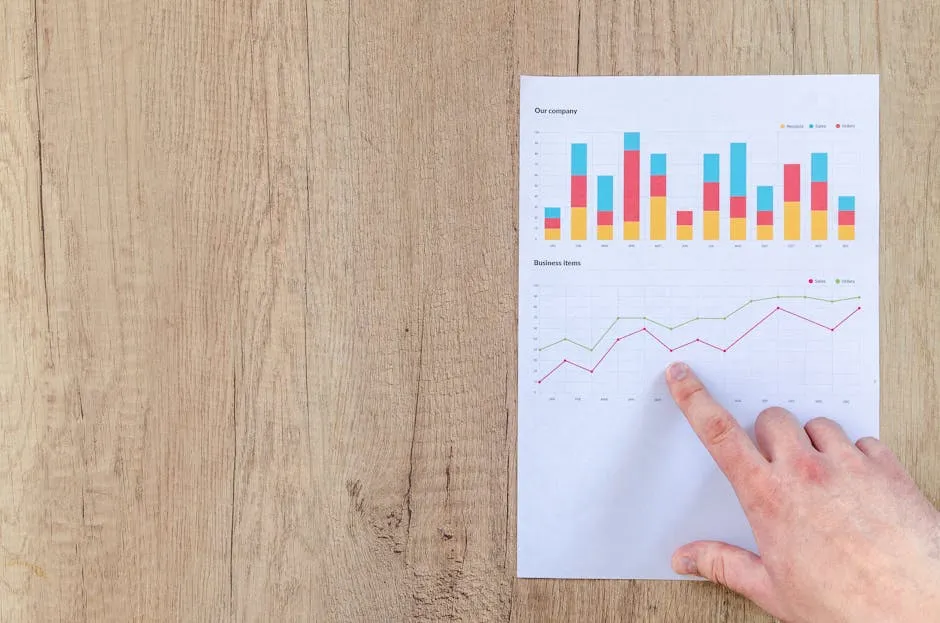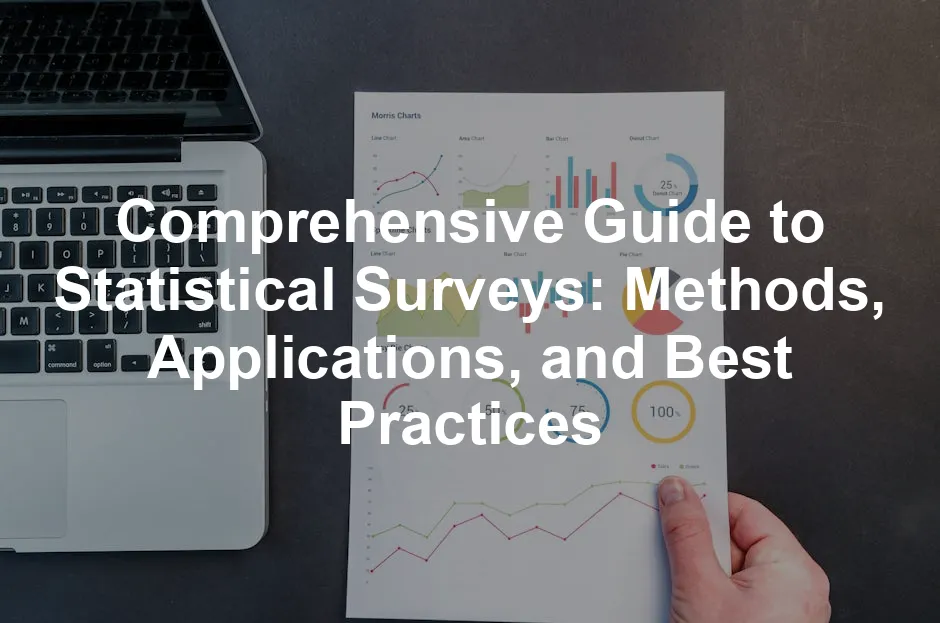Introduction
Statistical surveys are systematic methods of gathering information about specific populations. They play a crucial role in data collection and analysis, helping researchers, businesses, and governments make informed decisions. Imagine trying to figure out how many people prefer pizza over sushi without asking anyone—sounds impossible, right? That’s where surveys come in!
There are two primary types of statistical surveys: numerical and categorical. Numerical surveys focus on quantifiable data. For instance, “How many hours do you spend on social media each week?” This question leads to a measurable answer. On the other hand, categorical surveys gather responses that fit into specific categories, like asking, “What type of pet do you own?” Here, the answers could be dog, cat, or hamster—no numbers involved!
Statistical surveys have applications across various fields. In marketing, businesses use surveys to understand consumer preferences and behaviors. Health studies utilize surveys to assess public health issues, while government research often relies on surveys for census data and policy-making. For a deeper dive into the subject, check out Statistical Analysis with R for Dummies.
The purpose of this article is to provide a comprehensive overview of statistical surveys. We’ll discuss various methodologies, the challenges faced during surveys, and best practices for conducting effective surveys. By the end, you’ll be equipped with the knowledge to appreciate the value of statistical surveys in our data-driven world.

Understanding Statistical Surveys
What is a Statistical Survey?
A statistical survey is a structured approach to collecting data from a group of individuals or entities within a population. Think of it as a tool that helps researchers gather insights and information that can inform decisions across many domains.
Surveys serve to collect data that reflect the opinions, behaviors, or characteristics of a specific population. They can range from small-scale questionnaires to large-scale national censuses. The main goal? To gather information that can lead to actionable insights.
The importance of statistical surveys cannot be overstated. They provide essential data that informs policy-making, guides marketing strategies, and improves public health initiatives. By sampling a segment of the population, researchers can make generalizations about the entire group. This is particularly useful when time or resources are limited.
In summary, statistical surveys are indispensable for effective decision-making. They enable organizations to understand their audiences better, assess needs, and measure outcomes. Whether in business, healthcare, or government, surveys are vital tools for collecting data that shapes our world. If you’re looking to get a solid foundation in survey methodologies, consider grabbing The Survey Kit: A Comprehensive Guide to Designing Surveys.

Types of Statistical Surveys
Statistical surveys are categorized into two main types: numerical and categorical. Each type serves a unique purpose and is essential for different aspects of research.
Numerical Surveys
Numerical surveys focus on collecting data that can be quantified. They ask questions that yield numerical responses, making them perfect for statistical analysis. For instance, consider the question, “How many hours do you study each week?” This question invites respondents to provide a specific number, allowing researchers to analyze study habits statistically.
Numerical surveys are vital in various fields, such as education and health. For example, a health-related survey may ask, “How many servings of fruit do you eat daily?” This data helps health professionals identify dietary trends and make informed recommendations. If you want to delve deeper into data analysis, SPSS Statistics for Data Analysis is a great resource.

Categorical Surveys
Categorical surveys, on the other hand, aim to gather information that fits into distinct categories. These surveys ask questions like, “What is your favorite type of cuisine?” Here, respondents can choose from options such as Italian, Mexican, or Indian. The focus is on classifying responses instead of measuring them numerically.
Categorical surveys are crucial in understanding preferences and opinions. For instance, in market research, knowing customers’ favorite products can guide marketing strategies. By analyzing this data, businesses can tailor their offerings to meet consumer desires. If you’re looking for a comprehensive resource, check out The Complete Guide to Survey Questions.
Both numerical and categorical surveys hold significant importance in research. They provide a structured way to collect data, helping researchers make generalizations and informed decisions. By employing both types, researchers can gain a comprehensive understanding of the populations they study.
The blend of numerical precision and categorical richness allows for a more nuanced analysis, ultimately leading to better outcomes in various fields, from public health to marketing strategies. If you’re considering a career in this area, take a look at Data Science for Business: What You Need to Know About Data Mining and Data-Analytic Thinking.

Designing a Statistical Survey
Sampling Techniques
When it comes to sampling techniques, think of them as the secret sauce in your statistical survey recipe. Choosing the right method can make or break your data collection. Let’s break down a few popular sampling methods:
- Random Sampling: This method gives each member of the population an equal chance of being selected. It’s like a lucky draw! If you’re conducting a survey about favorite ice cream flavors, every single person has an equal shot at being chosen. This technique minimizes bias and enhances the representativeness of your sample, making it a go-to for many researchers.
- Stratified Sampling: Imagine you have a large box of mixed candies. You might want to ensure you get a fair mix of flavors. In stratified sampling, you divide your population into distinct subgroups, or strata, like age or income level. Then, you randomly sample from each stratum. This method ensures that different segments of the population are well-represented, making your results more robust.
- Cluster Sampling: Think of cluster sampling as organizing your friends into groups before throwing a party. Instead of surveying everyone, you randomly select entire groups (or clusters) and gather data from all their members. This is particularly useful when the population is spread out geographically. For example, if you’re studying a country’s education system, you might randomly select schools and survey all students within those schools.
Each of these methods has its unique applications, and choosing the right one depends on your research goals. Remember, the key to a successful survey lies in its sampling strategy! If you’re looking to deepen your understanding of survey methodologies, consider Survey Methodology.

Data Collection Methods
Once you’ve nailed down your sampling technique, it’s time to think about how you’ll collect your data. Luckily, there are several methods to choose from:
- Online Surveys: In our digital age, online surveys are all the rage. They’re cost-effective, quick, and can reach a vast audience. Think of platforms like SurveyMonkey or Google Forms. You can send them out like confetti!
- Telephone Interviews: Sometimes, a good old-fashioned phone call does the trick. Telephone interviews allow for a personal touch and can yield more in-depth responses. Just remember, not everyone loves unsolicited calls, so choose your timing wisely!
- Face-to-Face Interviews: This method offers the highest quality data. You can gauge non-verbal cues and build rapport with respondents. However, it can be time-consuming and more expensive. Imagine trying to interview someone about their favorite book while they’re munching on popcorn at a movie theater!
Each method has its pros and cons, so consider your target audience and research needs when making your choice. And if you’re going to conduct interviews, a Wireless Bluetooth Headset for Interviews can make the process smoother.

Questionnaire Design
Importance of Question Structure
The structure of your questionnaire is crucial. The way you word questions can lead to vastly different responses. For instance, asking, “Do you enjoy working from home?” is different from “How much do you love working from home?” The first question is neutral, while the second implies an expectation of love for remote work.
Order matters too! Placing sensitive questions at the end can help respondents feel more comfortable. Keep in mind that a well-structured questionnaire can increase response rates and improve data quality. If you’re interested in learning more about survey design, consider Survey Design: A Practical Guide for Researchers.
Best Practices for Questionnaire Design
Crafting an effective survey questionnaire is an art. Here are some best practices to keep in mind:
- Clarity: Use simple, straightforward language. Avoid jargon that might confuse respondents. Remember, you want them to understand what you’re asking without needing a translator!
- Neutrality: Ensure your questions are unbiased. Leading questions can skew your data. Instead of asking, “How great was our service?” try “How would you rate our service?”
- Simplicity: Keep questions short and to the point. A long-winded question can leave respondents scratching their heads. Aim for brevity to maintain engagement.
By following these best practices, you can create a questionnaire that not only garners responses but also yields valuable insights. Happy surveying! And if you need a good printer for those surveys, check out High-Quality Printer for Survey Printing.

Analyzing Survey Data
Once you’ve collected your data, it’s time to analyze it. This step transforms raw data into meaningful insights. Utilize statistical software tools like SPSS or R to carry out your analyses efficiently. These programs help you run various statistical tests, identify trends, and visualize your data.
But before diving into analysis, don’t overlook the importance of data cleaning and validation. This step is crucial for ensuring your data is accurate and reliable. It involves checking for errors, inconsistencies, and missing values. After all, you wouldn’t want to base your big decisions on faulty data, would you?
Properly cleaned and validated data sets the stage for actionable insights, helping you make informed decisions based on solid findings. If you’re curious about effective data visualization, check out Data Visualization: A Practical Introduction.

Applications of Statistical Surveys
Statistical surveys hold a prominent place across various fields, offering insights that influence decision-making, policy formulation, and strategic planning. Let’s take a closer look at some areas where these surveys are not just useful but absolutely crucial.
Fields Utilizing Statistical Surveys
Political Polling
Political polling is perhaps one of the most visible applications of statistical surveys. Think of it as the crystal ball for elections. Pollsters gather data to gauge public opinion on candidates, policies, and issues. This helps political parties tailor their campaigns and strategies based on what potential voters care about.
For instance, leading up to an election, a survey might ask respondents their views on healthcare reform. The results can reveal whether a candidate’s stance resonates with the electorate. Successful political campaigns often rely on this data to adjust messaging, target specific demographics, and even decide on campaign stops.
However, it’s not all sunshine and rainbows. Polling can be tricky. If a survey’s sample isn’t representative, the results might lead to misguided conclusions. Remember the infamous 2016 U.S. election polls? Many underestimated support for certain candidates due to flawed sampling. If you’re interested in the psychology behind survey responses, The Psychology of Survey Response is a fantastic read.

Market Research
In the business world, market research is the bread and butter of strategic planning. Companies use statistical surveys to understand consumer preferences, behaviors, and market trends. Imagine a fast-food chain wanting to launch a new burger. They might survey potential customers to discover their taste preferences or dietary restrictions.
These surveys provide invaluable data that help businesses make informed decisions. For instance, if a survey reveals that 60% of respondents prefer plant-based options, a company might consider launching a new vegan burger line. If you’re looking for tools to help with market research, take a look at Marketing Research: Tools and Techniques.
Market research surveys can also assess customer satisfaction. A simple question like, “How satisfied are you with our service?” can yield insights that drive improvements. The key here is that actionable insights stem from well-designed surveys that accurately capture consumer sentiment.

Health and Social Science Research
Statistical surveys play a pivotal role in health and social science research. Researchers often rely on surveys to gather data on public health issues, behaviors, and attitudes. For example, a health survey might ask respondents about their exercise habits, smoking status, or dietary choices.
These surveys help public health officials identify trends and devise strategies to tackle issues like obesity, smoking cessation, and mental health. For instance, if a survey indicates a high prevalence of smoking among young adults, health campaigns can be tailored to target this demographic specifically. If you’re interested in learning more about qualitative aspects of research, consider The Complete Guide to Qualitative Research.
Social science research also benefits from statistical surveys. Scholars study societal trends, such as the impact of social media on relationships, by collecting data through surveys. The findings can inform policies or contribute to academic literature that shapes our understanding of societal dynamics.

Challenges in Conducting Statistical Surveys
Common Issues
Conducting statistical surveys is like trying to herd cats—it’s not as easy as it sounds! Several challenges can pop up like surprise guests at a party. Let’s tackle some of the most common issues faced during surveys.
Non-Response Bias: Imagine sending out a survey and only hearing back from half your participants. That’s non-response bias knocking at your door! When certain groups don’t respond, the results can become skewed. For instance, younger folks might be more likely to fill out an online survey than older individuals. This can lead to a misrepresentation of the population’s true sentiments.
Sampling Errors: Sampling errors are like that awkward moment when you realize you’ve invited the wrong people to your gathering. If the sample isn’t representative of the population, the findings will be off. For example, if you survey only one neighborhood when trying to gauge city-wide opinions, the results won’t reflect the diverse views of the entire city.
Data Quality Concerns: Picture a recipe with missing ingredients—your survey data can end up just as incomplete! Data quality issues arise from poorly designed questions, leading to ambiguous responses. If respondents don’t understand the questions, the data collected may not accurately represent their opinions or behaviors. To tackle these issues, consider utilizing resources like How to Measure Survey Reliability and Validity.

Solutions and Best Practices
Now that we’ve identified the challenges, let’s turn our attention to some nifty solutions and best practices to keep your surveys on track!
Pre-Survey Testing: Before sending your survey out into the wild, conduct pre-tests! This step helps identify any confusing questions and allows you to tweak them for clarity. Think of it as a dress rehearsal before the big performance. Testing helps ensure that your survey is user-friendly and easy to understand.
Follow-Up Reminders: A gentle nudge can work wonders! Sending follow-up reminders can boost response rates. You can craft friendly emails or messages, reminding participants to complete the survey. Sometimes, all it takes is a little encouragement to get those responses rolling in!
Incentives: Everyone loves a reward! Offering small incentives can motivate participants. Whether it’s a chance to win a gift card or a discount on future purchases, a little something extra can increase participation and make respondents feel valued. If you’re considering ways to organize your survey materials, don’t forget to check out the Office Supplies Organizer for Survey Materials.
By implementing these strategies, you can navigate the tricky waters of statistical surveys and gather high-quality data that truly reflects the population’s opinions and behaviors.

Future Trends in Statistical Surveys
Impact of Technology
Let’s face it—technology is reshaping the way we conduct surveys, and it’s about time! The rise of big data and machine learning is changing the game. These tools allow researchers to analyze vast amounts of data quicker than ever before.
Imagine having access to data from social media, online transactions, and other digital platforms. This wealth of information can provide insights that traditional surveys might miss. Machine learning algorithms can identify patterns and trends, helping researchers make more informed decisions.
Moreover, technology is enhancing the overall survey experience for participants. With user-friendly apps and online platforms, taking surveys is easier than ever. Respondents can complete surveys on their smartphones while waiting in line for coffee—talk about convenience! To keep your survey data secure, consider reading up on A Guide to Understanding Data Privacy.

Emerging Trends
The future of statistical surveys is also embracing new methodologies. Online surveys have become increasingly popular. They’re cost-effective, flexible, and can reach diverse audiences quickly. Plus, who doesn’t love filling out a survey from the comfort of their couch?
Mobile data collection is another trend on the rise. With smartphones in nearly every pocket, researchers can gather data on the go. Whether it’s through apps or SMS surveys, reaching participants has never been easier. If you’re looking for a portable way to collect data, a Portable Power Bank for On-the-Go Data Collection is a smart investment.
Moreover, as concerns about data privacy grow, researchers are adapting by ensuring transparency and offering opt-in options. Respondents are more likely to participate if they feel their data is secure and their privacy respected.
The combination of technology and evolving methodologies is paving the way for a more efficient, inclusive, and reliable future in statistical surveys.
Conclusion
In summary, statistical surveys are essential tools for gathering data and understanding populations. They face challenges such as non-response bias, sampling errors, and data quality concerns. However, by employing best practices like pre-survey testing and follow-up reminders, researchers can navigate these hurdles effectively.
The future of statistical surveys is bright, driven by technology and emerging trends like online and mobile data collection. These advancements will enhance data accuracy and accessibility, allowing researchers to make informed decisions that inform policy, business strategies, and scientific research.
Well-designed statistical surveys are not just about numbers—they’re about understanding people and their needs. By utilizing robust methodologies and adapting to new technologies, we can ensure that statistical surveys continue to be a valuable resource in our data-driven world. And don’t forget to consider tools like Digital Voice Recorder for Interview Transcriptions to enhance your data collection!
FAQs
What is the difference between qualitative and quantitative surveys?
Qualitative surveys focus on collecting non-numerical data, such as opinions and experiences. For example, asking, “What do you think about our new product?” encourages detailed responses. In contrast, quantitative surveys gather numerical data that can be statistically analyzed. An example would be asking, “On a scale of 1 to 10, how satisfied are you with our service?”
How can I improve my survey response rate?
To boost response rates, consider these strategies: – Send reminders to participants. – Offer incentives for completing the survey. – Keep surveys short and engaging. – Ensure questions are clear and concise.
What software can I use for analyzing survey data?
Popular software tools for analyzing survey data include: – SPSS: Great for advanced statistical analysis. – R: A free programming language for data analysis. – Excel: Suitable for basic analysis and data visualization.
How can I ensure the validity of my survey?
To enhance survey validity: – Pre-test your survey to catch issues early. – Use clear and unbiased language in questions. – Ensure your sample is representative of the target population.
What are some ethical considerations in conducting surveys?
When conducting surveys, consider the following ethical points: – Obtain informed consent from participants. – Ensure data privacy and confidentiality. – Be transparent about how the data will be used.
Please let us know what you think about our content by leaving a comment down below!
Thank you for reading till here 🙂
All images from Pexels




